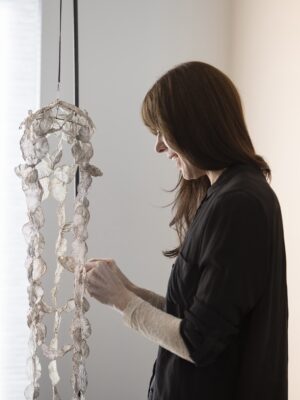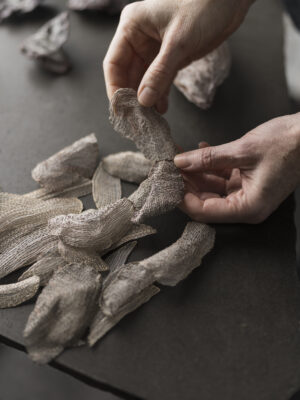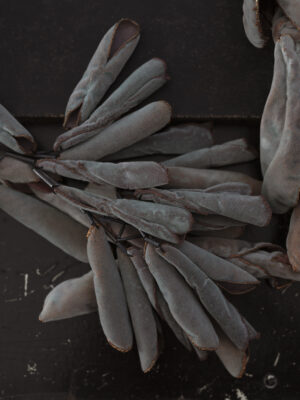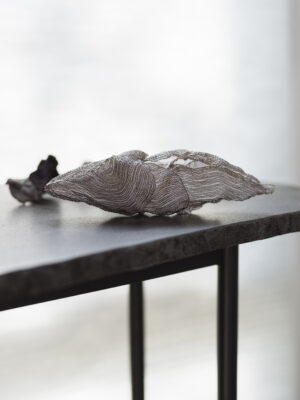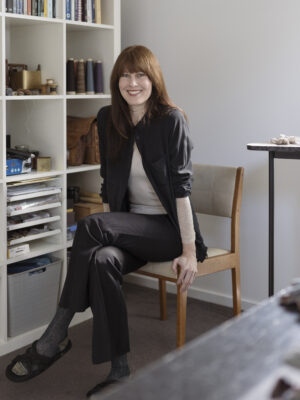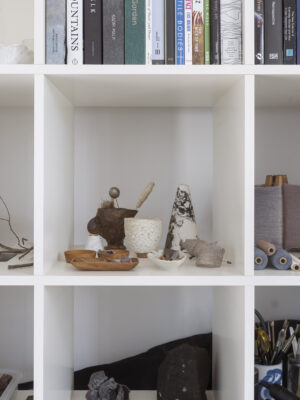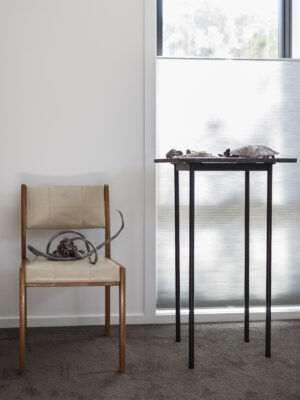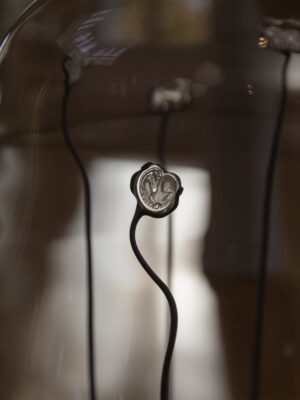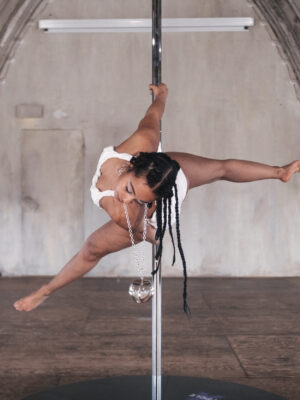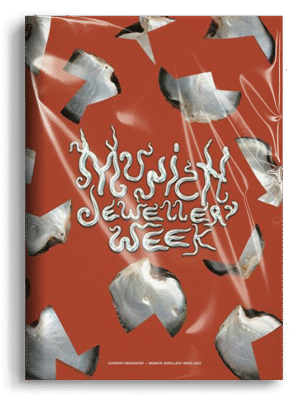Elena Aldrighetti: How would you describe your work to someone who has never seen it before? What inspires you, and could you reflect a little on the journey that has brought you to this particular point in your artistic practice?
Michaela Pegum: Describing my work can feel tricky sometimes. When I was completing my PhD and working on articulating the intentions and qualities of my work, I realised that my creations are difficult to ‘language’ or ‘name’. This is because I am interested in exploring the dimensions of felt experience, and in order for the work to exist in, and lead the viewer into this space, it needs to function on a sensorial and evocative level. The aim of my work is really to open and provoke, rather than to define. That being said, words that come to mind are textural, organic, ambiguous, and evocative.
For quite some time, my practice has been centred on exploring the states of being that allow us to connect deeply with our environment and a shared sense of life. Enfolded in this is my curiosity about how felt experience contributes to a sense of meaning and empathy within these encounters in the world. I’m very interested in the states of understanding that develop outside of literal language, where our senses of knowing and meaning function in a different way. For me, this happens most strongly through embodied, sensorial experience, both in the raw, natural world and through my somatic practices. In these encounters with the body and the land, something of a liminal state develops, and a potential for expanded knowledge and experience then opens up. My art-making has thus evolved as a way of exploring these simultaneously mysterious and familiar dimensions through material languages. ‘How can textures and form move us in these ways?’ As part of this, I endeavour to make work that inspires a sense of empathy in the viewer — a relating-with, rather than a looking-at.
‘The aim of my work is really to open and provoke, rather than to define.’
MP: This is all integrated with my experience of growing up dancing and spending time being-with the raw, natural world, listening to it and feeling into it. These were my favourite places, infinitely rich in terms of connection and insight. I engaged in art-making a lot as a young person, mainly through drawing and dance. Dance eventually became the centre of my life for many years. Then, at one point, I felt that I needed to work with materials, to see what I was creating as something that existed beyond my own movements and sensations, to be able to reflect on it and relate to it as another entity. So I began studies in visual arts, specialising in expanded gold and silversmithing, as this showed the most potential for nuanced expression within the material arts. My learning and exploring eventually led to a PhD, which I completed in December 2022. Throughout my PhD, I moved further towards sculptural work and the experience of the viewer with it, in an installation context. My current work incorporates a consideration of space, support, and sound as a way of creating an embodied environment for both the viewer and the artwork, which I think is a circling back to the communion of performance.
EA: How do you approach object-making, given your background and current practice as a performer and dancer?
MP: I think I’ve always thought about object-making through the lens of experience, with the form being something to be experienced rather than merely looked at. When I was dancing a lot, before returning to studying and practising visual arts, I noticed that I found the experience of engaging with sculpture in space inherently performative. As I approached and circled the form, it felt as though we were both meeting and performing as living entities together. ‘Was I circling the sculpture, or was the sculpture circling me?’ I found this very beautiful and engaging. We were creating the world together in that moment — just as the audience and the performer co-create a world within the ‘happening’ of a performance. In this sense, I think a lot about the states of being that the object might inspire in the viewer — where will it take them?
My background as a dancer has also informed my ways of making. My dance practice was grounded in improvisational techniques, and my material practice has followed a similar path. Discovery through intuitive play is very important to me and is the way I develop a collaborative relationship with my materials, drawing on something ‘beyond me’ in the creation of my substances and forms. It is here that I learn from my processes and materials, and where I seem to find those poetic or metaphoric connections back out into the wider world beyond the studio. This way of discovering and generating form — by drawing on embodied resources beyond the designs of the frontal brain — lay at the heart of my dance practice as well.
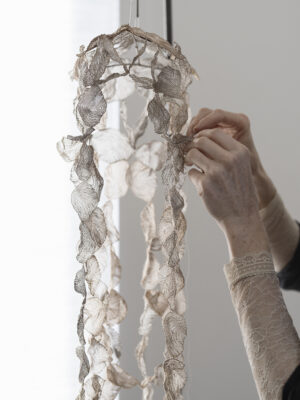

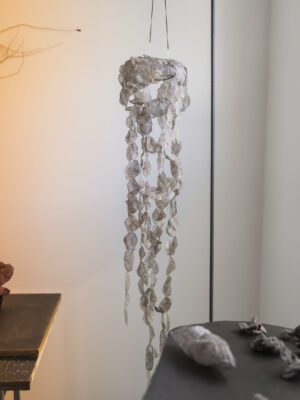
EA: How does finishing a tangible object differ from the transitory nature of dance performance? Does creating something permanent change your connection to the work?
MP: The experience of a dance performance is lived and ephemeral. Afterwards, it becomes an embodied memory. I have some dance works or performances that are so deeply marked in my body and psyche that I can re-enter them as places, moving through the choreography as if I am exploring a landscape.
Finishing a tangible object also involves a journey through time, as I rarely design my forms but rather discover them. Perhaps there is something similar in the way the form feels like a landscape too. Often, the pieces I make don’t have a definitive front or back and can be travelled in a global sense with the hands and eyes. But there is a moment when I know a work is complete, and then the process of discovery comes to a close, in some ways. I turned to working in material because I wanted to be able to see and relate to the forms I was creating, and I think I was looking to learn from the form itself, to hear what it was saying back to me — and I do feel this happens. In this sense, especially because of the ‘open’ nature of the objects I create, the process often continues. I see or learn different things from the forms as time goes by, as they embody different things, and their interpretation is somewhat mercurial.
‘Artistic skill, sensibility and independence takes time to generate, and I would like to see this given more value.’
EA: In your practice, you use techniques like electroforming and stitching, both of which involve movement: copper grows, and your hands move repetitively. How do you engage with these methods, particularly considering the unpredictable outcomes of electroforming with copper, which often has a life of its own?
I have always been intrigued by this process’s ability to unpredictably express itself; the resulting form is very often a surprise, an emergence of an entity with its own sense of volition, evolved in the uterine-like, blue liquid world of the electroforming solution. It introduced a broadening of the landscape of my making, where I wasn’t imposing an idea on the material, but working in conversation with it.
Although the way the process often takes off in its own direction can be exciting, it can also be very stressful when deadlines are looming! I generally need to give myself a lot of lead-up time, as I cannot predict with much certainty how long the road to the resolution of a work will be. This lack of control is quite humbling, and it brings up my relationship with trust. In moments of pressure and struggle, I acknowledge how the studio is reflecting the uncertainty and instability of experience in the larger world outside it, and this feels heartening somehow. It allows me to relate to these challenges more philosophically and find peace with them.
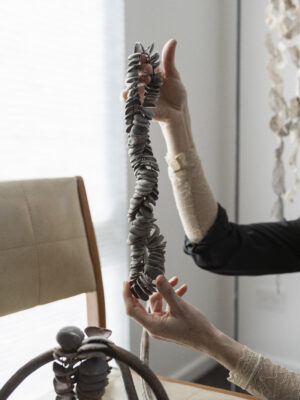
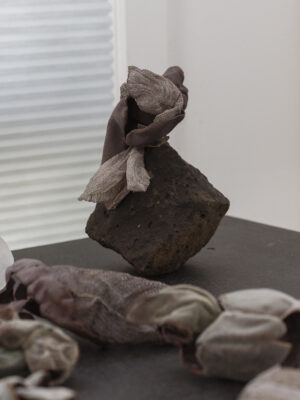
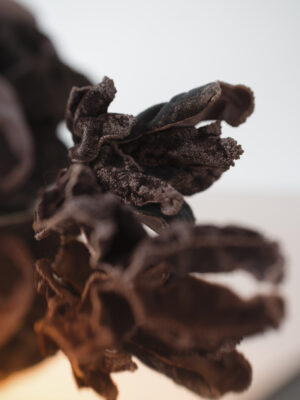
EA: Are you part of Radiant Pavilion? If so, could you share a bit more about your exhibition or the pieces on display?
MP: I am presenting a solo exhibition during Radiant Pavilion titled All is Intimate — an installation of sculptural objects, image, and sound. Much of the work in the exhibition stems from my PhD research. This project spanned land, atmosphere, and studio, and was an exploration of the felt, intuitive, and sensory processes shared across the liminal zones of encounter within both landscape and art-making. My research focused on understanding how felt experience contributes to a sense of meaning and empathy within these relational encounters, the resonance between natural and cultural ecologies, and how I could explore these ideas through an encounter with cultivated substance, form, and atmosphere.
I wanted to keep the research grounded in embodied experience, so I created a sensory repository as a wellspring for the studio practice, engaging immersively with the threshold landscapes of dusk and the Australian desert. Here, I explored how these landscapes might inspire one towards their liminal, transforming qualities, prompting a loosening of the frameworks of ‘ordinary’ perception. I have a catalogue that documents these immersions in the exhibition space to offer a background to the work.
In the studio, I continued this line of enquiry, exploring the capacities of materials beyond our usual estimations of them, to see how they could inhabit their greater potentials for form and meaning. The primary area of material research involved growing a ‘threshold’ material, in the electroformed metal-textile substance that I described earlier. Other works incorporate silk, bronze, glass, and ceramic. I also collaborated with a sound artist (Dominic Redfern) to create sound for the installation, based on the character of the artworks and the experiential dimensions from which they were developed.
EA: How do you perceive the art, craft, and jewellery scene and community in Melbourne? What is special about it to you?
MP: I am part of a broad community of artists in Melbourne. I met some of these people through dance and others through my studies at RMIT. I really enjoy knowing artists working in different mediums and of varying ages; a diversity of perspectives is inspiring and important to me. What I hold most dear about my artistic community is the support we have for one another, and the passion we share. I would love to see more support for contemporary craft at a tertiary level in Melbourne — something dedicated and comprehensive. We have lost educational facilities, and there has been a great reduction in the time students are given for their learning. Artistic skill, sensibility, and independence take time to develop, and I would like to see this given more value. As the world continues to spin the way it does, time to deepen and develop, and a phenomenal engagement through the work of the hand, is something we need to treasure and protect. I see it as a very important part of our humanity.
This article was produced by Current Obsession in collaboration with Radiant Pavilion.
Radiant Pavilion is the largest biennial of its kind in the southern hemisphere, highlighting the vital role of contemporary jewellery and object practice in the creative and cultural sector. This year, over 200 makers from Australia and beyond contribute to 60 events across Naarm/Melbourne. The 2024 program explores themes including Indigenous storytelling, climate change, technology, and connection, reflecting the diversity of the artists and materials involved.
All images are the courtesy of Astrid Mulder.
Michaela Pegum, based in Naarm, Melbourne, graduated with a BA Fine Art (Honours) in 2020 and completed her PhD in 2022. Her work has been exhibited in Australia and internationally. She is represented by Pieces of Eight Gallery in Melbourne.
Elena Aldrighetti is an Italian artist and researcher pursuing a Master’s in Craft, Jewellery Art at the University of Gothenburg, Sweden. Her work explores the narrative aspects of making and how senses like taste and smell, along with the memories they evoke, connect with the body and the concept of jewellery.
